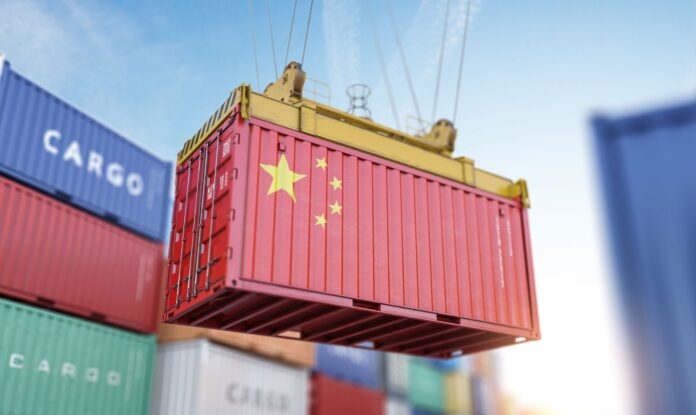China’s exports jumped sharply in March as manufacturers rushed shipments ahead of new U.S. tariffs, providing a temporary boost even as the broader outlook for trade and economic growth darkens.
Outbound shipments rose 12.4% year-on-year in March, reaching a five-month high. This surge came as Chinese factories raced to beat escalating U.S. trade barriers that threaten to hit future sales. Exports had grown by just 2.3% over January and February combined.
However, the momentum is expected to be short-lived. The United States has ratcheted up tariffs on Chinese imports to an eye-watering 145%, intensifying the trade war between the world’s two largest economies. In retaliation, Beijing imposed tariffs of up to 125% on American goods.
Despite March’s strong numbers, signs of strain are becoming increasingly evident. Inbound shipments to China dropped by 4.3%, signaling weakening domestic demand. This follows a steeper 8.4% contraction in imports at the beginning of the year, underlining the challenges facing policymakers as they attempt to stabilize the economy.
China’s overall trade surplus for March stood at $102.64 billion, slightly down from $104.8 billion in December. Notably, the trade surplus with the United States widened in the first quarter to $76.6 billion from $70.2 billion a year earlier, potentially keeping Beijing firmly in Washington’s crosshairs.
Tensions escalated after U.S. President Donald Trump implemented successive 10% tariff hikes, accusing China of failing to curb the flow of fentanyl into the U.S. Beijing dismissed the moves as “a joke” and vowed to defend its interests.
In commodity trade, China’s imports of crude oil rose during March. However, shipments of soybeans, coal, iron ore, and unwrought copper fell, with soybean imports plunging 36.8% year-on-year. Reports suggest state-owned buyers may have already halted U.S. farm imports following government guidance.
Financial markets in China showed modest gains on Monday, supported partly by mixed signals from the White House over potential exemptions for smartphones and electronics. The CSI300 Index rose 0.3%.
Amid mounting external pressure, Beijing has pledged to roll out additional fiscal and monetary support to cushion the economy. President Xi Jinping, addressing the issue during a meeting with Spanish Prime Minister Pedro Sanchez, emphasized the need for China and the European Union to “jointly oppose unilateral acts of bullying.”
Meanwhile, Xi launched a tour of Southeast Asia this week to strengthen regional alliances as trade tensions with the U.S. intensify.
Global institutions are warning of broader fallout. The World Trade Organization cautioned that the Sino-U.S. trade conflict could shrink bilateral trade flows by as much as 80% and inflict severe damage on the global economy.
Recent forecasts from major banks reflect the growing pessimism. Growth projections for China’s 2025 GDP have been lowered to around 4%-4.2%, notably under the government’s target of approximately 5%.
For now, China’s export sector remains a bright spot, but with a dramatically harsher tariff environment setting in, the months ahead are expected to tell a very different story.
























